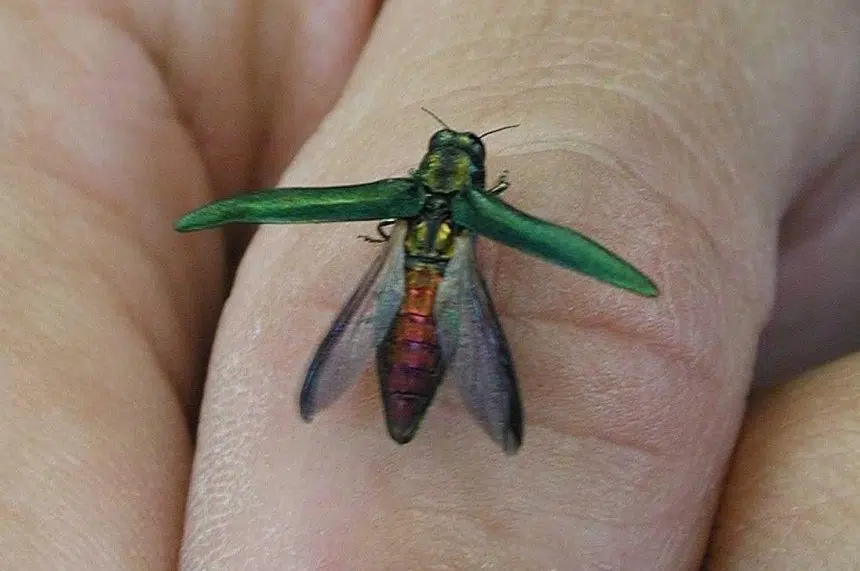WINNIPEG — An invasive beetle that has already ravaged millions of trees in Central Canada and the U.S. has made its first appearance in the West.
The emerald ash borer, a highly efficient killer of ash trees, has been confirmed in a tree in a Winnipeg neighbourhood.
“At this point, we have to assume it’s as bad as it sounds,” said Krista Ryall of the Canadian Forest Service.
Ash borers, originally from China, are already so prevalent in Ontario, Quebec and the eastern U.S. that scientists fear some species of ash may be wiped out. The International Union for Conservation of Nature has said the toll may eventually reach eight billion trees.
“All of our North American ash species are vulnerable,” Ryall said.
The problem surfaced in Winnipeg this fall, when a city forester responded to a complaint that a tree in the St. Boniface neighbourhood didn’t look good.
“There was a lot of woodpecker activity — woodpeckers feeding all along the main stem of the tree,” said city forester Martha Barwinsky.
Workers pulled out some of the larvae the birds were feasting on and had them tested by the Canadian Food Inspection Agency. They were ash borers.
“We found numerous D-shaped exit holes in that tree, so certainly there were quite a number of insects in that tree which have already exited and found their way to adjacent ash trees in the area,” Barwinsky said.
Winnipeg has 350,000 ash trees shading its boulevards and neighbourhoods. Now, their future is shaded.
“Typically, what we’re seeing is within six to eight years, most if not all of the ash trees are killed by this beetle,” Ryall said. “They call it the death curve.”
Winnipeg’s cold climate may delay that prognosis a few years. But Barwinsky said little can be done to stop the infestation.
Studies suggest the bugs are perfectly capable of surviving a Winnipeg winter and they have few natural predators in Canada. Ash borers can infest a tree for a couple seasons before the impact is noticeable, giving it time to multiply and making it hard to spot.
“There’s nothing you can see. The tree looks perfectly healthy, then end of season or next year, it looks suddenly dead,” said Ryall. “And it’s been infested for several years.”
Federal officials will conduct a visual survey for more infected trees in the neighbourhood. A closer survey that involves pruning branches and looking under the bark will follow.
The city will likely rely on removing infected trees and injecting high-value trees with an insecticide to mitigate the damage, Barwinsky said. In the long-term, Winnipeg will consider biological controls such as importing a parasitic wasp that feeds on the beetles.
Meanwhile, Winnipeg will go on planting trees. Ash borers eat only ash trees and urban foresters have other choices, including elm, oak, linden and maple trees. The city stopped planting ash last summer, before the outbreak was spotted.
“We’re not giving up,” Barwinsky said.
“I’m still confident we will still have a significant canopy in Winnipeg. We have to. It makes a big difference in our quality of life here.”
— By Bob Weber in Edmonton. Follow him on Twitter at @row1960.











